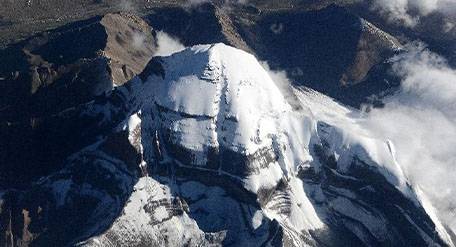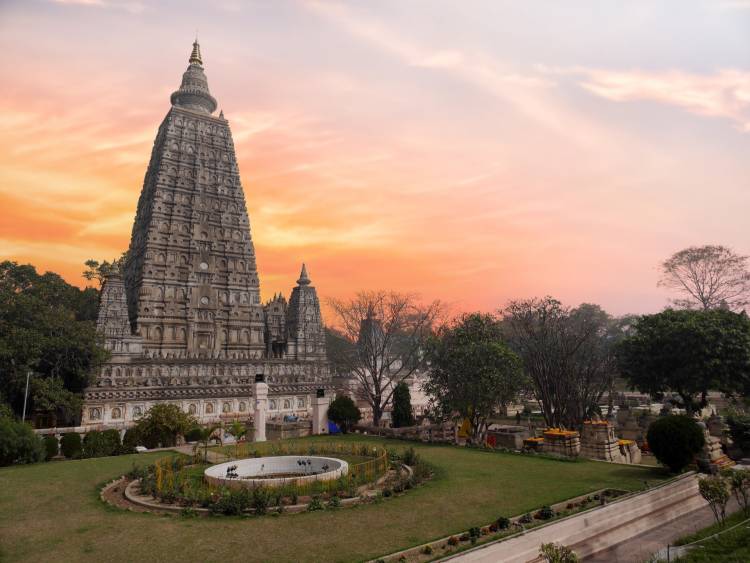
Kailash Manasarovar Aerial Darshan at Just @ Rs 35,000 Reserve Your Seat Now! Click Here
When the famous Indus or Harappan civilization settled around the banks of the river Indus and Sanatan Culture indiaSutlaj in the Indian sub-continent. The cities belonging to the Harappan civilization - Harrapa and Mohenjodaro in Pakistan, Lothal in Gujarat, and Ropar in Punjab to name a few, which were excavated in the 19th century CE, came out with surprisingly interesting facts. Like most modern cities, these ancient places were also constructed with well-planned architecture, broad streets cutting each other at right angles, houses made of burnt bricks, a proposed wage system, the Great Bath meant for holy rituals, and great citadels. Almost perfect town planning and Sanatan culture set a part of this unique civilization from the other contemporary ones. Suddenly, by about 1500 BCE, the civilization declined perhaps due to a natural calamity or foreign invasion.
But the Harappan civilization was not an end to life in the Indian subcontinent as there were many to develop over the course of time. The people moved further in their life and again started settling themselves along the rivers and plains in the land of India, or rather the entire Indian sub-continent there, by forming the Vedic settlement. The Vedas, Rigveda, the earliest one, accompanied by the other three Samveda, Yajurvedaand Atharvaveda, which form an integral part of the Indian culture, date back to this period and even today are the earliest literary sources reflecting the ancient history of India and the Indians.
Soon was to evolve the 16 Mahajanapadas in the 6th century BCE, among whom the kingdom of Magadha established its paramountcy over other kingdoms of the Ganges Buddhism in IndiaValley. It was at this time in 528 BCE when a young prince denounced His luxurious life, attained enlightenment, and preached to others the path of the Middle way, known as Buddhism. Another school of thought, Jainism, also developed as per the teachings of Mahavira during this period.
As these two new sects were developing, Chandragupta Maurya established the rule of the Maurayas in Magadha, which his grandson further strengthened, Ashoka throughout northern, central, western, and parts of southern India. Ashoka, when got perturbed by the miseries created by his imperialistic policies, converted to Buddhism and spread Buddhism in different parts of the world, which soon became a major religion in most countries of the world.
After the death of Ashoka in 232 BCE, his successors could not match his potential, and the Mauryan empire started disintegrating into the hands of the foreign invaders Sungas, Greeks, and Sakas. It took around 400 years to reorganize things, which can more or less be credited to Samudragupta and Chandragupta II, the rulers of the Gupta dynasty. They not only strengthened their empire and established internal peace but also encouraged art, literature, culture, science, and technology. The Guptas are credited for the construction of rock-cut caves of Ajanta and Ellora, the beginning of the Hindu temple architecture, and last but not the least, giving protection to Kalidasa, the famous Pallavas Temple in South IndiaSanskrit poet and dramatist, who compiled Abhigyana Shakuntalam, Kumarasambhavam, and Meghadutam.
After the decline of the Guptas, the rulers like Harshavardhan (604 -647 CE) in Kannauj, the Cholas and Chalukyas in southern India, accompanied by the Palas in the east and Pallavas in Kanchi further patronized the Indian culture, heritage, art, and architecture. But at the same time, they kept on expanding their boundaries, which further resulted in feuds among themselves over their territories. In fact, as are sult of imperialism, the Cholas overthrew the Pallavas in the 9th Century CE and regained political primacy in south India. Throughout the Indian subcontinent, the small rulers were ruling over small regions, and it was the disunity among themselves which invited the foreign invaders to invade and rule over the Indian territories in the medieval period.

I stood in front of the mountain expecting the transformation, eternity and some

Transpiring from a Sanskrit word namely ‘Vihaar’, Bihar is worldl
I am back to home after wonderful holidays in India organised by Max Holidays. Both I and my husband are extremely pleased wit.......
India is a great country with amazing landscapes and beautiful water world of Kerala. Our tour to North India and Kerala was a.......
Dear Mr. Gogia, We just want to thank you for everything you did to make our holiday so wonderful. We had a great trip and have told everyone what .......

All our trips are authentic and carefully designed

Our trips are flexible to alter according to your demand

Our experts have first hand knowledge about destinations

We offer best value for your money invested in touring with us.

With Max Holidays you complete travel in peace of mind
Put us on work to plan your next travel. Send your details to our experts now to get a free travel plan with quote